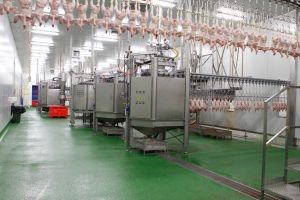Employee safety always has been and will always be a priority for the chicken industry. Chicken processors continue to focus their efforts on preventing workplace injuries by implementing ergonomics and medical intervention steps, while continually introducing new technology and automation in the workplace.
These efforts are showing positive results, demonstrating the vast advancements the industry has made in improving employee safety.
Although there is ample data and experience showing that increased line speeds are safe, they continue to draw attention from activists, the media and others. As such, NCC recently launched a new resource page focusing on poultry line speeds that features frequently asked questions, background, statistics, third party experts, videos and pictures. The new page can be found here.
The United States is one of the only countries in the world with arbitrary caps on evisceration line speeds. Poultry processing plants in other parts of the world, including Canada, Brazil, Europe and Asia, operate safely in excess of 200 birds per minute (bpm).
Whether plants are operating at 125, 140 or 175 bpm, plants have taken every precaution to help keep workers safe, especially during COVID-19, including: social distancing, temperature checks, installing plastic barriers between work stations where social distancing is challenging, providing masks, face shields and gloves for workers, staggering shifts, making breakrooms available outside, multiple hand sanitizing stations, extra cleaning and sanitation of the plant, educating employees about steps to take at home to keep healthy, encouraging sick or vulnerable employees to stay home with paid sick leave, and testing for the virus.
The incidence of occupational injuries and illnesses within the poultry sector’s slaughter and processing workforce has fallen by 84 percent over the last 25 years and continues to decline according to the 2018 Injury and Illness Report released by the Department of Labor’s Bureau of Labor Statistics (BLS), all during the time when evisceration line speeds have increased.


